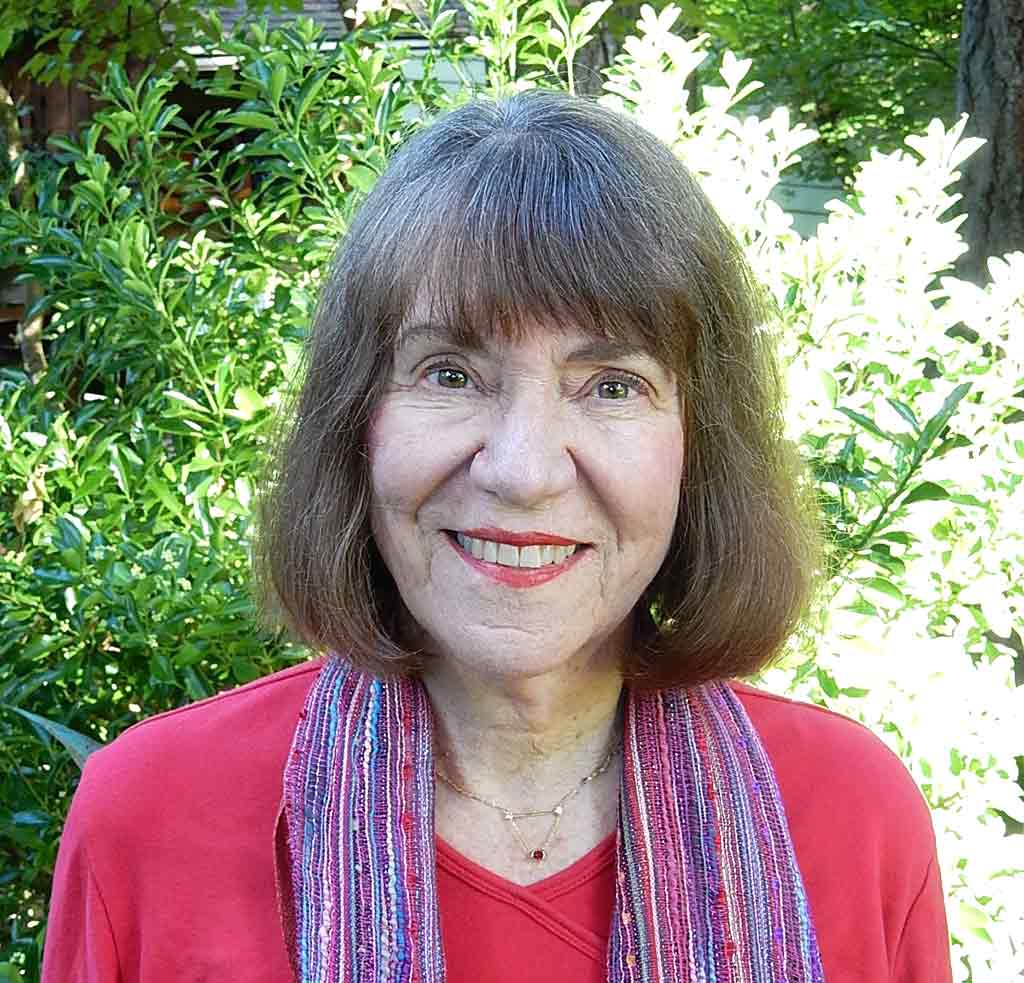
While children are learning to read, they are also learning how to live. The Dew Drop Doll Books are about nine or ten pages long and are almost like a pamphlet. The purpose of them is to expose children to good ways to live and how to solve problems. The characters are in fourth and fifth grade. The reading levels are for a skilled second grader and on up. My little one-year-old granddaughter just wants to play with the doll. So the books and doll and quilt kits can be for a lot of different ages.
1. What led you to the mission of being a book author and founder of Dew Drop Dolls and Stories?
When I retired from being in real estate and had previously been a teacher, I was praying for what I should do next.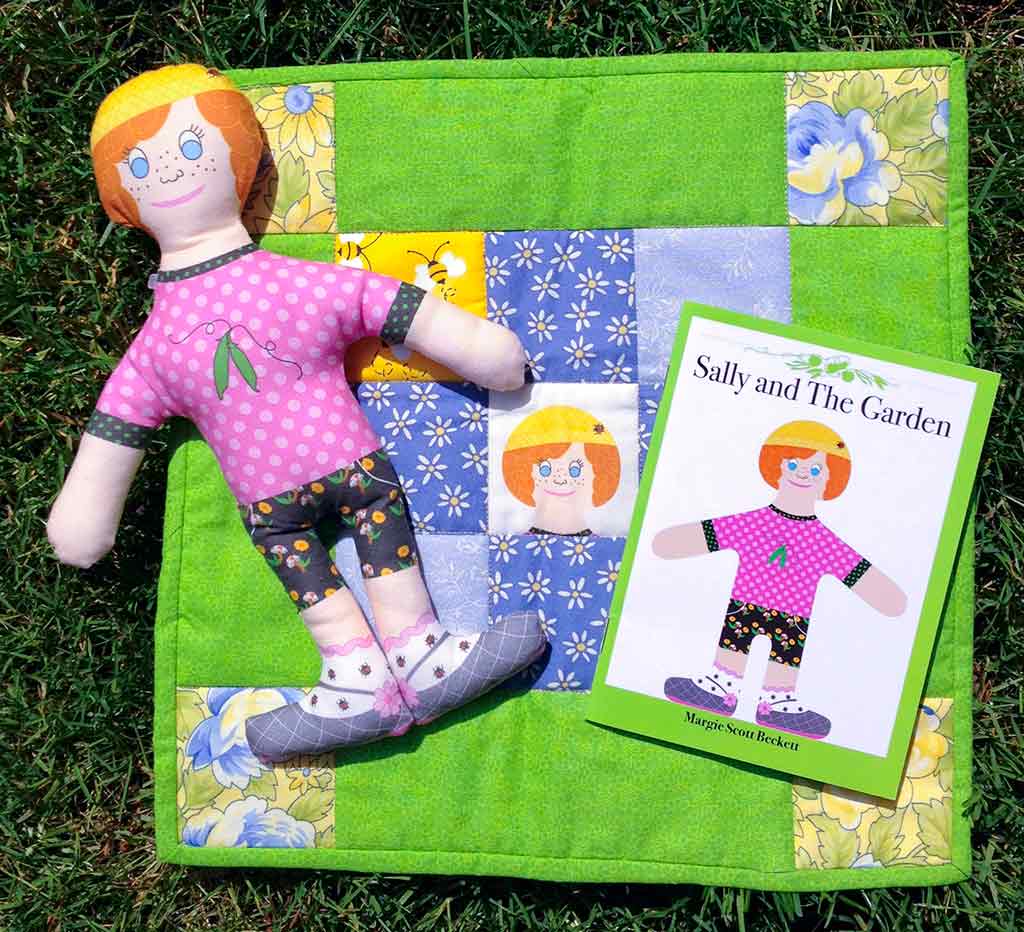 I felt there was a need for children to have stories that teach good character traits. I decided I would write these little books. I wrote the books and thought, “What if the characters in the books could be made into a dolls?” I took almost a year to figure out the design to get these dolls to work. They all look different, but they are all the same shape. I also designed a quilt piece that comes with the doll and quilt patterns that I have made for each doll. This inspiration came because I spend time quilting.
I felt there was a need for children to have stories that teach good character traits. I decided I would write these little books. I wrote the books and thought, “What if the characters in the books could be made into a dolls?” I took almost a year to figure out the design to get these dolls to work. They all look different, but they are all the same shape. I also designed a quilt piece that comes with the doll and quilt patterns that I have made for each doll. This inspiration came because I spend time quilting.
It is an original project that I don’t take a lot of credit for – because it “came to me” to do this book and kit. I write the books, design the dolls, and then a graphic designer draws them up for me. I don’t have the ability to do the digital drawings, so that is done for me. I decided to have the fabric printed in North Carolina. All the materials are made in America. (Note: Margie has written a series of books and each book includes a fabric doll kit, quilt piece, and quilt pattern matching the character featured in the story. To see the full collection of the books, doll kit, quilt piece, and quilt patterns, click here.)
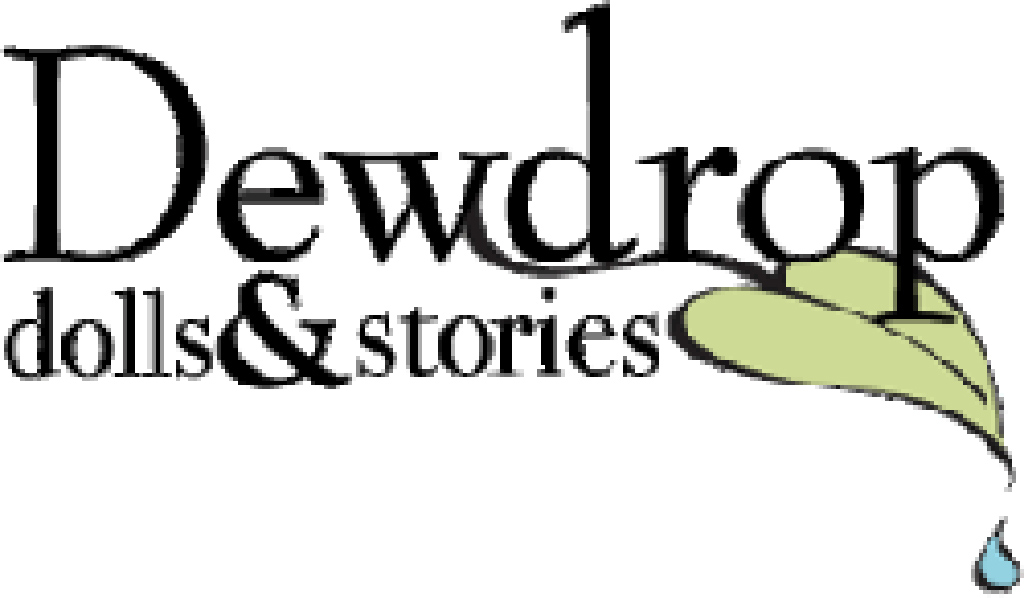 When I have the books and instructions finished and the fabric is ready, I put them together to show which quilt goes with each book. The mother or grandmother or child can make the quilt and doll. They sew it up and stitch it. They can design their own quilt or copy the design in the kit. The little doll quilt is about twelve inches by twelve inches.
When I have the books and instructions finished and the fabric is ready, I put them together to show which quilt goes with each book. The mother or grandmother or child can make the quilt and doll. They sew it up and stitch it. They can design their own quilt or copy the design in the kit. The little doll quilt is about twelve inches by twelve inches.
I was thinking about what name I would use for this collection of books, dolls, and quilts. I thought of some names. I looked them up. Someone else had them or the names just didn’t feel right. I was sitting in church one night. All of a sudden this idea came, “Dew Drop”. I thought, “Well, that is interesting. Dew Drop Dolls.” I loved the alliteration – and everything.
When I got home I thought, “I live in Oregon. It rains a lot here. Dew Drop sounds kind of somber. Maybe I’ll call it “Sun Drop”. 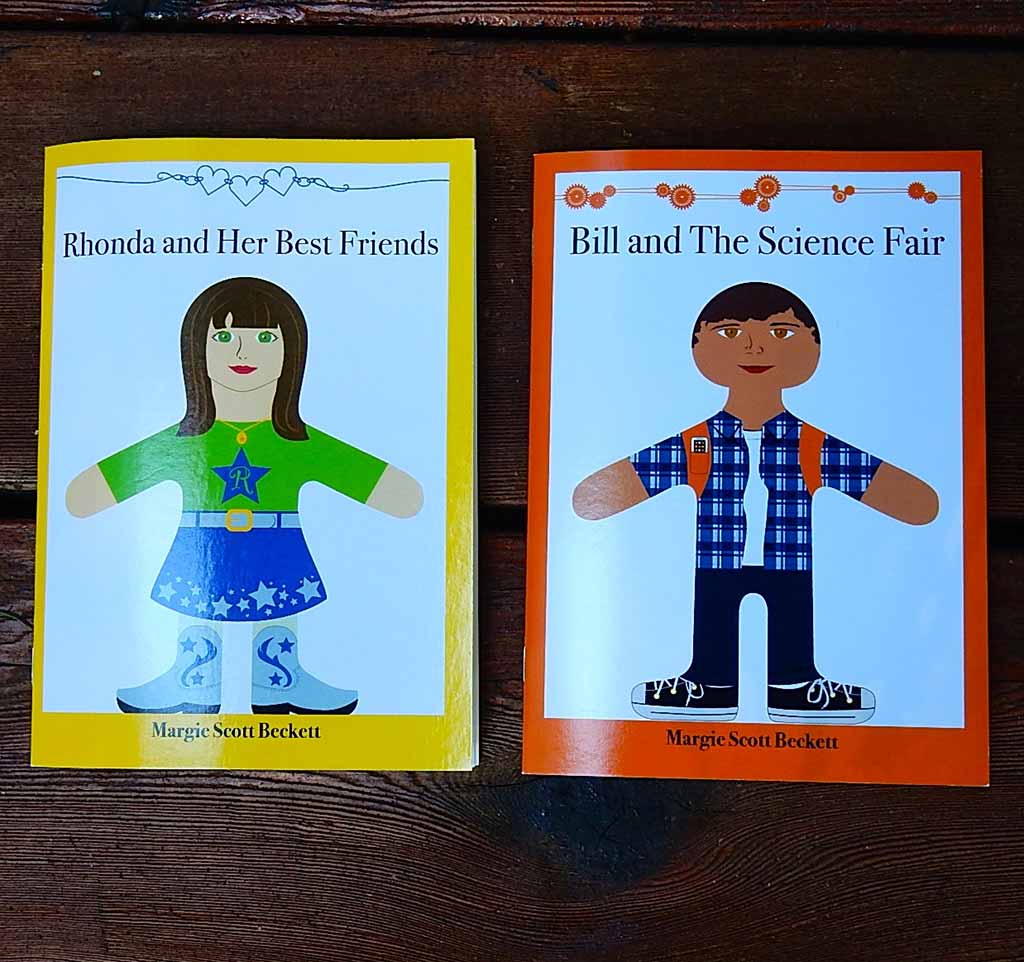 But I thought, “That’s kind of weird. That doesn’t make sense.” Then the idea came to me, “Well, my dear, when God tells you something, you don’t really want to change it.” If you look up dew in Deuteronomy 32, verse 2, you read, “My doctrine shall drop as the rain, my speech shall distill as the dew, as the small rain upon the tender herb, and as the showers upon the grass.” (King James Version KJV). So I named them Dew Drop Dolls and Stories.
But I thought, “That’s kind of weird. That doesn’t make sense.” Then the idea came to me, “Well, my dear, when God tells you something, you don’t really want to change it.” If you look up dew in Deuteronomy 32, verse 2, you read, “My doctrine shall drop as the rain, my speech shall distill as the dew, as the small rain upon the tender herb, and as the showers upon the grass.” (King James Version KJV). So I named them Dew Drop Dolls and Stories.
This is very special – how the name came to me. Later, I discovered people love the name. What is special is realizing that I can’t take any credit for this. It is just what I was “told to do” and I did it. It was like I got this whole download: “Write the books. Do the dolls. Do the quilts.” OK!
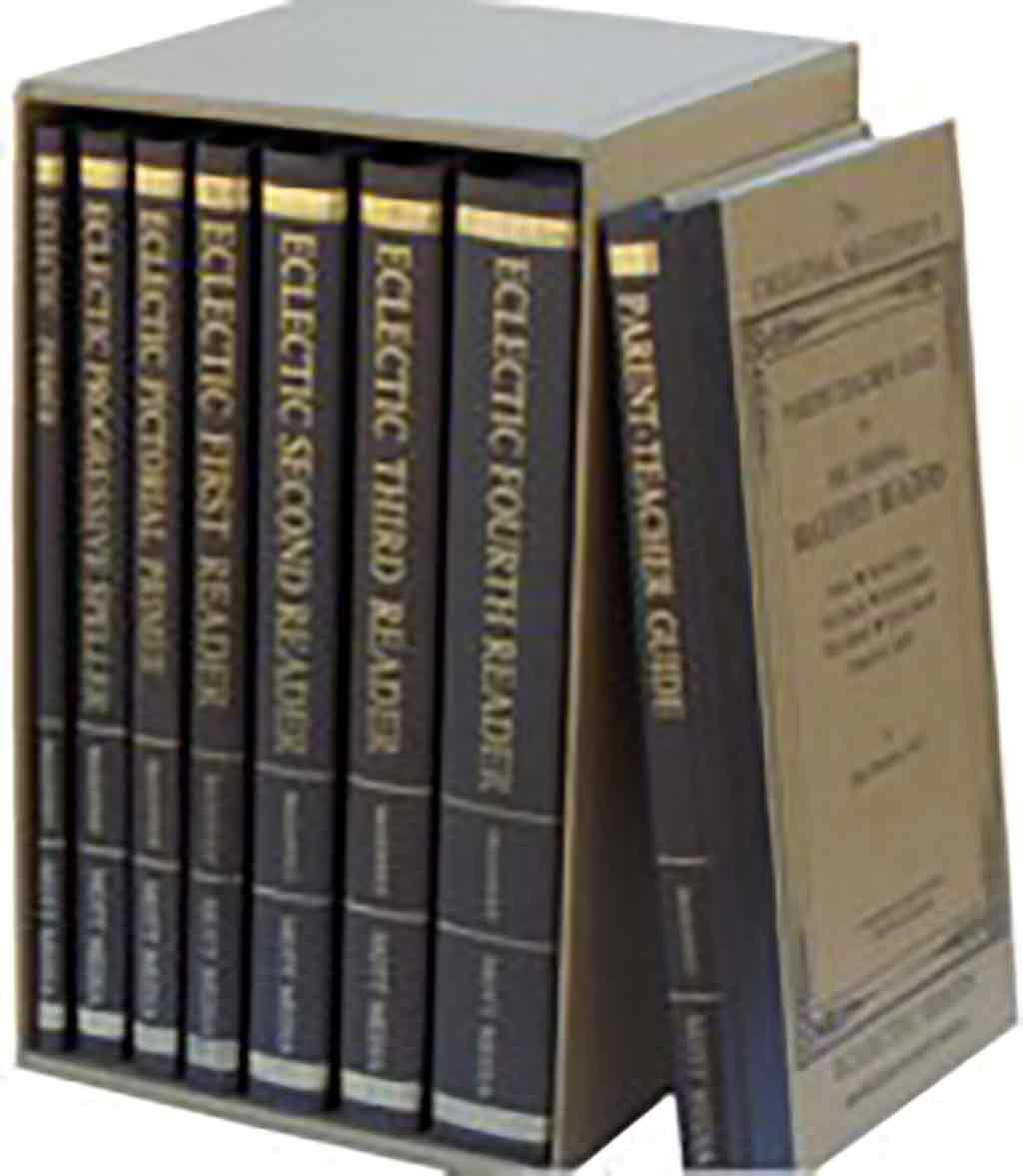 When I was in high and college I loved to write. My teacher said, “You should write a novel some day.” The writing part was the easiest part for me. When I was young, I had the McGuffey Readers. I just loved them.
When I was in high and college I loved to write. My teacher said, “You should write a novel some day.” The writing part was the easiest part for me. When I was young, I had the McGuffey Readers. I just loved them.
While children are learning to read, they are also learning how to live. They are learning how to have good character traits. The Dew Drop Doll Books are about nine or ten pages long and are almost like a pamphlet. I call them “little books”. The purpose of them is to expose children to good ways to live and how to solve problems. The characters are in fourth and fifth grade. The reading levels are for a skilled second grader and on up. My little one-year-old granddaughter just wants to play with the doll. So the books and doll and quilt kits can be for a lot of different ages.
2. What does this mission mean to you?
I love the process of writing them. It makes me happy to do them. It takes a great deal of proofing and having a lot of people look at them as well. 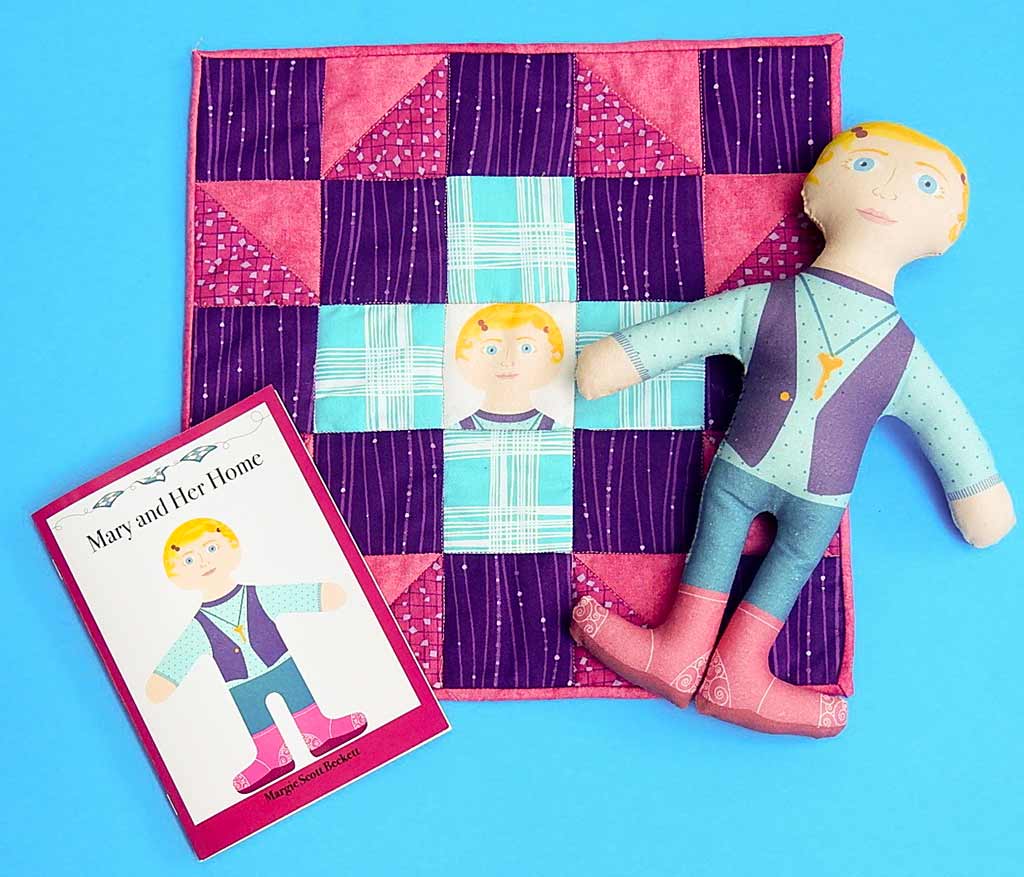 There is a lot involved in getting the kits ready, but I love this work because I know they will go out and bless children and their families.
There is a lot involved in getting the kits ready, but I love this work because I know they will go out and bless children and their families.
What was interesting is that there are seven books in all and only one of them is based on a real person. The book that is based on a real person is about someone I knew many years ago. She was a piano teacher. She had two little students from a family who could not afford piano lessons. The teacher had the students babysit her young son and in exchange, she taught them how to play the piano.
One story I wrote tells about a little girl who wants to take piano but her family doesn’t have a piano and doesn’t have enough money for lessons. The qualities shown in Patty and the Piano are patience, persistence, hard work, and self-discipline.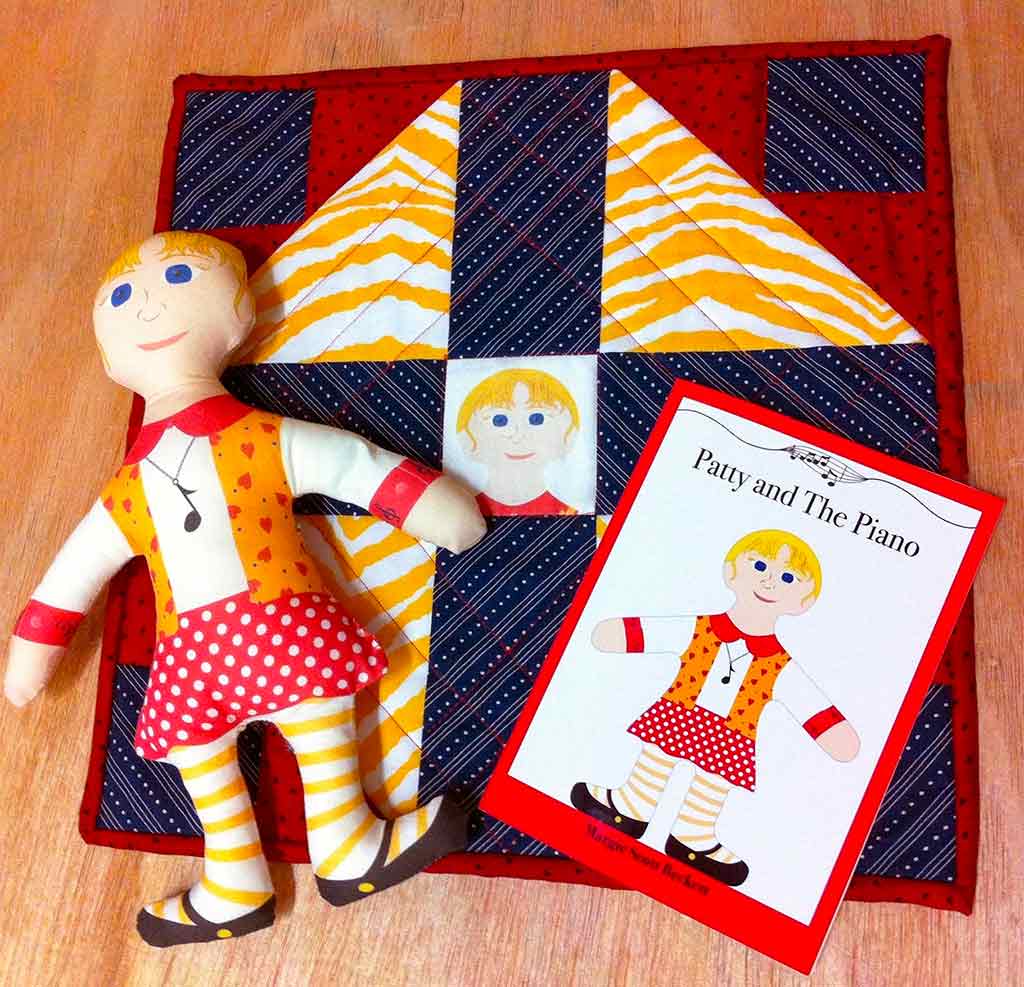 It is neat to think that someone had a life experience and now forty years later someone still has inspiration from that experience.
It is neat to think that someone had a life experience and now forty years later someone still has inspiration from that experience.
At the time that I wrote this story and had it edited, a lady emailed me and told me she had a granddaughter that wanted to quit playing the piano. She asked if she could share this story with this child and her daddy. I said, “Well, sure. Of course you may.” She shared the story and the child did stay with playing the piano. A couple of years later, this child won some medals with her piano playing. When you hear these kinds of stories, you feel you are doing something that is helpful to other people.
3. What was your best day as a book author and founder of Dew Drop Dolls and Stories?
The whole process has really been fun – even though it has been a lot of work. I have really enjoyed it.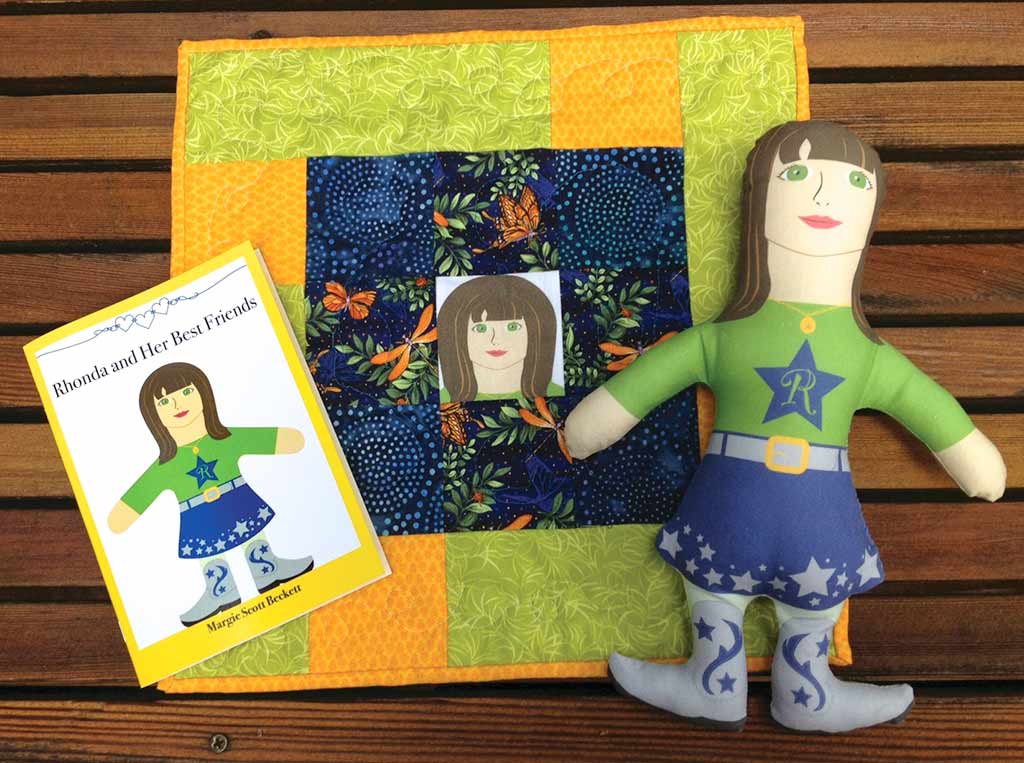 I have a friend who was a principal in one of the school districts near here. She retired. There is a home school community about an hour where I live. They asked her to be a principal for this school. She found out about my little books. They were working on character education. I gave her a couple of the books. The teachers started working with the books. This principal asked me if I would come and talk to the children for an hour.
I have a friend who was a principal in one of the school districts near here. She retired. There is a home school community about an hour where I live. They asked her to be a principal for this school. She found out about my little books. They were working on character education. I gave her a couple of the books. The teachers started working with the books. This principal asked me if I would come and talk to the children for an hour.
I had kids from grade one to grade five – all together in this little circle. There were twenty-two of them. My friend wanted me to tell them how I made this product, what it was like to do something like that, and also to talk about the stories. It was so very sweet.
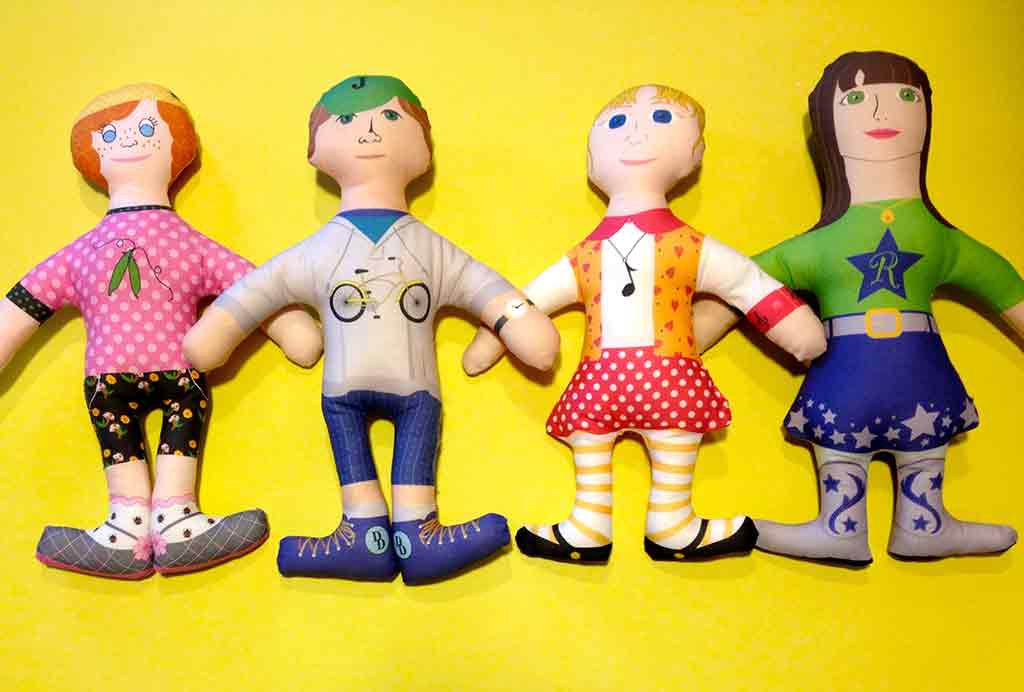 I found out that one of the teachers had taken the book and had the children do it as a play. We all sat and talked for an hour. It was so thrilling to see how touched they were and how much they wanted to learn these good ideas.
I found out that one of the teachers had taken the book and had the children do it as a play. We all sat and talked for an hour. It was so thrilling to see how touched they were and how much they wanted to learn these good ideas.
At the end I said, “If you were going to write a book like this, what would you write about?” One little girl said, “I’d write a book about how you could stand up for yourself.” I had already had individual children like the books. But to see that many children with such an age span so excited about them – this made me realize that I really was on the right track.
I met this darling young teacher from Australia. She took one of the Dew Drop Dolls kits back to Australia. There is a lady in Canada who has ordered the dolls. What I am doing has become worldwide. That is also fun for me.
4. What was your worst day as a book author and founder of Dew Drop Dolls and Stories?
I was sharing the books with some of my friends from college. This gentleman said to me, “Did you know you have a proof reading error in this little book?” 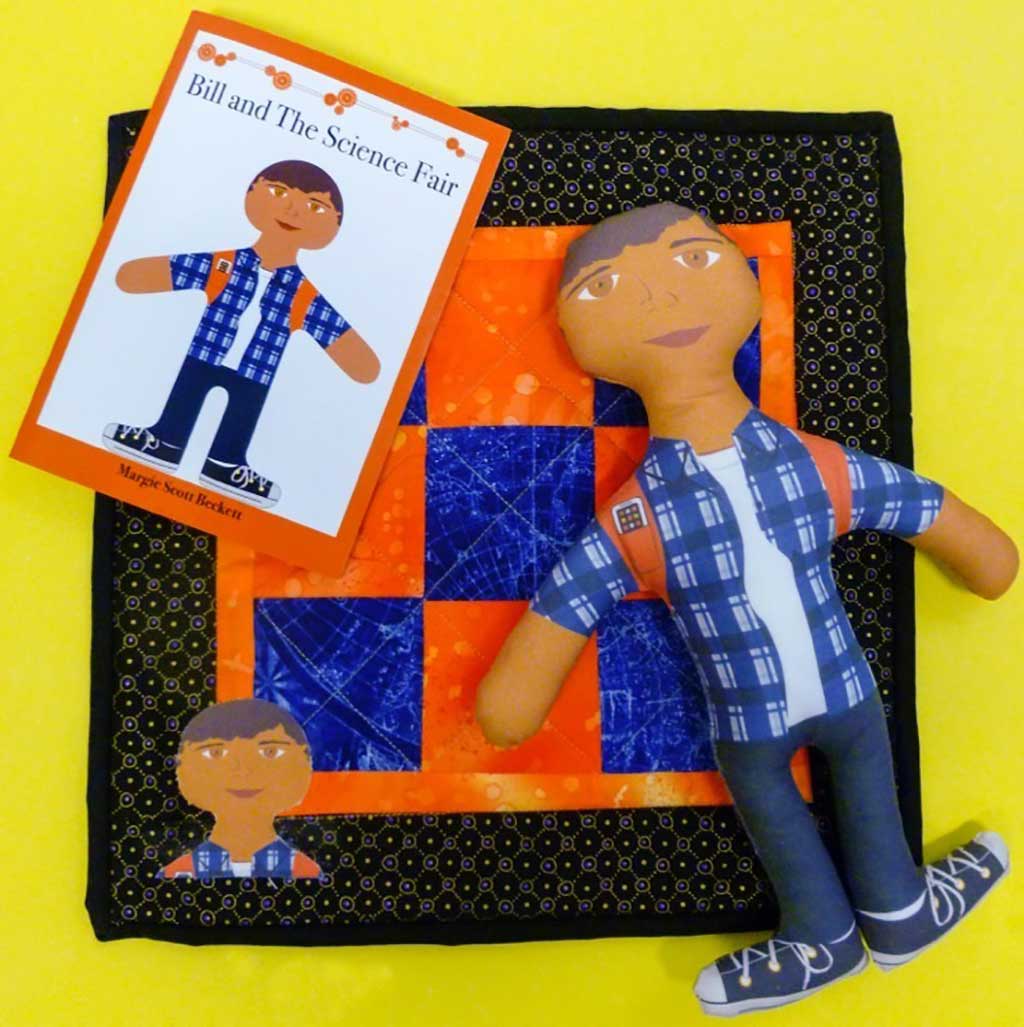 I told him, “No, I didn’t know that.” I had to have all those books thrown away and recycled. I had to redo all the books. The error was in “Patty and the Piano”. Patty is talking to a woman named Mrs. Appleby. However one page, the name was typed Mrs. Appleton. So on one page the name was Appleby and on the other it was Appleton. I had to have all the books reprinted. I realized there was a lesson for me to learn: I need to be more precise. I get excited about these wonderful children, what they are learning, and what I can teach them. But the product itself has to be just right!
I told him, “No, I didn’t know that.” I had to have all those books thrown away and recycled. I had to redo all the books. The error was in “Patty and the Piano”. Patty is talking to a woman named Mrs. Appleby. However one page, the name was typed Mrs. Appleton. So on one page the name was Appleby and on the other it was Appleton. I had to have all the books reprinted. I realized there was a lesson for me to learn: I need to be more precise. I get excited about these wonderful children, what they are learning, and what I can teach them. But the product itself has to be just right!
5. How did you survive your worst day?
You have to find something that uplifts your thought. An important thing to remember is that in all of history, this event is only a little “blip”. When something seems to be wrong, you have to turn to whatever it is that inspires you so you can lift your thought and not blow something out of proportion. You put it in perspective.
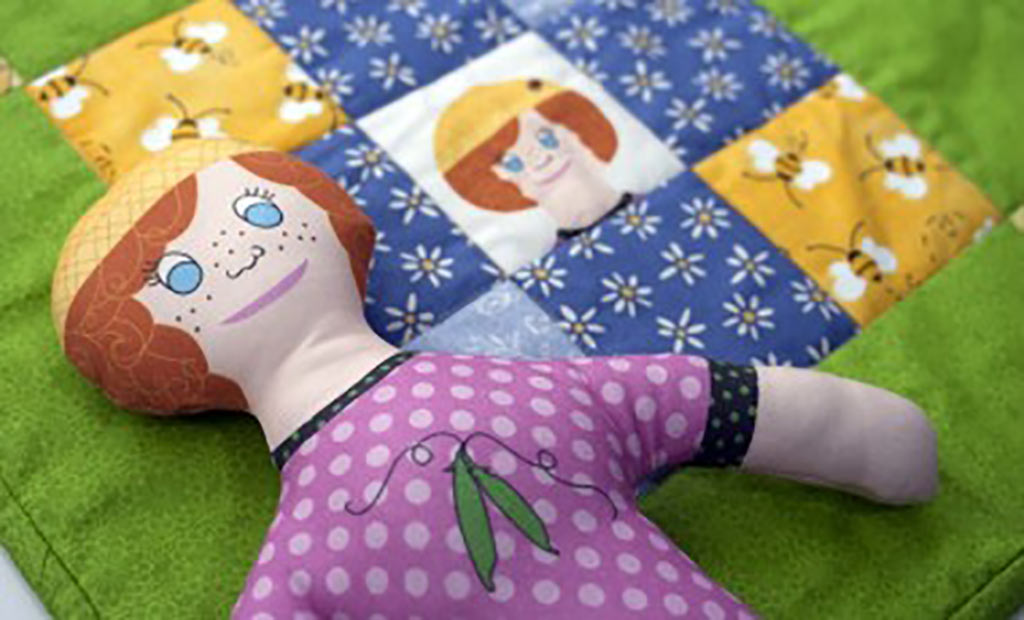 When this proofreading error happened, I didn’t feel horrible. I was just glad I noticed it. I’ve done a lot of writing and editing, but it is surprising how difficult it is to really get every single mistake when you are proofreading. Now I have a cadre of people who are really excellent at proofreading. Even now one of us will miss something and the other will correct the mistake.
When this proofreading error happened, I didn’t feel horrible. I was just glad I noticed it. I’ve done a lot of writing and editing, but it is surprising how difficult it is to really get every single mistake when you are proofreading. Now I have a cadre of people who are really excellent at proofreading. Even now one of us will miss something and the other will correct the mistake.
This was a bad day and we had to reprint all the books. I felt I learned a very valuable lesson from this. I was grateful because I didn’t feel despairing about it. I just was grateful that I figured it out fairly quickly. It is an important character trait for me to have them be correct. For instance, in one book I spelled Colombia, Columbia. The proofreader discovered this error and told me that the proper spelling is with an o and not a u. I was able to correct this mistake and didn’t have to have this one redone.
6. What advice do you have for someone who would like to be an author and creator of something original such as your doll and quilt kits?
We live in a wonderful time because you can self publish. This is what I did. I have never taken these little books to an agent. The printing costs are not so horribly expensive. In my case, the fabric is more expensive than the books. Not everybody sews, so I will also sell the books without the fabric.
The best thing you can do if you want to write is to write something every day.  Every day you should at least write a paragraph. Then you will find your own style and your own ideas. You will decide if you want to write fiction or nonfiction. You’ll learn to listen to your muse and see what feels authentic to you. When I sat down to write these books, I literally just sat down and started writing. Some of it was good and some of it was terrible. It’s hard to throw out your own words. But this is what I did.
Every day you should at least write a paragraph. Then you will find your own style and your own ideas. You will decide if you want to write fiction or nonfiction. You’ll learn to listen to your muse and see what feels authentic to you. When I sat down to write these books, I literally just sat down and started writing. Some of it was good and some of it was terrible. It’s hard to throw out your own words. But this is what I did.
We live in a “magical” period of time. My dad was a printer. I grew up with that. I wish now that he could see all these things that one can do. For instance, a friend of mine writes poetry and takes pictures. He puts out little books for his friends. There is a lot you can do and do it relatively inexpensively if you want to start writing and you want to share it with people.
- « Previous person: Paul Winter
- » Next person: Tonya Hornberger